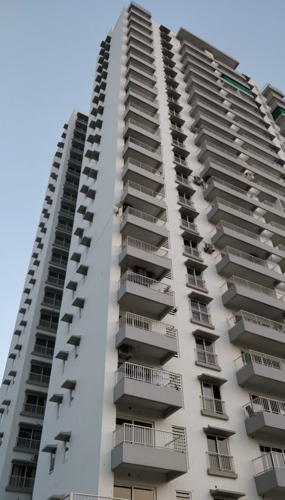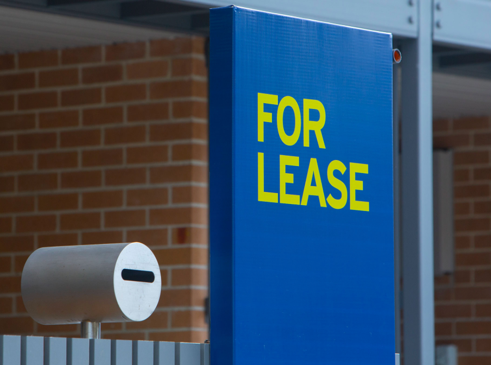Many buyers turn to off-the-plan, high rise apartment purchases for several reasons. Low deposits, enticing extra items thrown in, and that amazing feeling of sparkling new are just some of the reasons. For investors, the depreciation benefits can be significant for cashflow and holding costs.
There are some issues for buyers to be mindful of, however.
Not all apartments are necessarily impacted by these issues. Exceptions account for only a few, but there are exceptions. Highly scarce, boutique blocks with beautiful designs, and penthouses can be better performers.
But in the main, we are very cautious about the off-the-plan, high rise apartment model.
I have eleven key reasons, and in no particular order of importance, (every reason is important) they are as follows:
Number One: Brand new assets generally underperform because the Land to Asset Ratio is too low
This is an easier concept to explain for a townhouse or a house, because the land on title is evident. For a tower, the land content for each individual owner is more questionable. If a tower features two-hundred apartments and if the land value of the site is twenty million dollars, a simple division between apartments in this particular block suggests that each dwelling owns a share of the land value. If the ownership is equal and undivided in this case, the owners will have a respective $100,000 land ownership share each.
If the apartment they own was purchased for $400,000 they have a 25% land to asset ratio. It’s an approximating science in almost every case, but once the block value has been determined, the calculation is not so tricky. Challenges arise when considerations for larger, more valuable apartments are taken into account, (such as penthouses) but for the purposes of the exercise, an ‘equal and undivided share’ model should give the buyer a broad idea of what their relative land to asset ratio is.
In our approach sub-50% is bad, and 70-90% is optimal.
Given that land appreciates and buildings depreciate, the rate of depreciation will outstrip the rate of appreciation in most cases.
This means that until the depreciation rate has calmed down, the property will likely lose value over the initial few years. I’m yet to meet a buyer who is OK with their asset losing value for a sustained period after it is purchased.
Nobody likes that idea except the tax accountant.

Number Two: Builder profit margin is built in, and prices are often higher than market value
Many of these apartments are sold to buyers via introducers. Introducers range from select financial planners and accountants who are paid “kick-backs”, slick sales people in ‘free seminars’, and real estate agents who are paid a generous commission for each sale. It is not uncommon for sales commissions to reach as high as 8% of the purchase price.

The question is – if a $500,000 sale delivers $40,000 to the salesperson, what is the apartment really worth? The banks and bank valuers are familiar with these models and most know that $460,000 would represent a more likely value in scenarios like this.
Number Three: Comparable sales data is not transparent
Developers and marketers make an art form of shying away from sharing other sales prices in the block. After all, a buyer would have a reasonable chance of determining the going rate for an apartment like their chosen one in the block if they could be privy to the sales data.
Developers don’t want this information offered to buyers, in fact they don’t want them to be able to find it at all. Even as a professional in my industry, being equipped with recent sales data on a paid portal isn’t enough for me to glean full visibility. Developers offer enticements such as rebates to buyers to an effort to get deals over the line. It may be a nominated sum that is reversed back to the buyer upon settlement, or it could be inclusions, (free televisions and furniture, etc.) Rebates are impossible for anyone attempting to conduct price analysis to identify. They are captured on the Contract of Sale and while the buyer may negotiate a deal for $450,000, their contract could state $500,000 with a rebated $50,000 payable at settlement.

It’s a smoke-screen for other buyers who think that everyone else paid $500,000. Social proof is an amazing thing, and when it comes to high rise, off the plan apartments, it can make fools of so many buyers.
Developers offer rebates to enable themselves to discount while preventing the resultant sales from adversely impacting further valuations in the block.
If one contract price states $450,000 and the other states $500,000, a thorough valuer will consider the $450,000 sale result.
Number Four: Limited Scarcity Value

This is easy to explain. A high rise apartment block will have a lot of similar dwellings. From layout, floor area, bedroom number, to decor… they will all feel quite the same. Aside from elevation and views, it’s hard for developers to work to a margin and create unique spaces when hundreds of apartments are involved.
Worse still, in most areas where high-rise apartments are being sold, chances are that other similar blocks will be nearby/neighbouring/on schedule to be built.
The issue with lack of scarcity relates to resale value.
Lack of scarcity value introduces price shock vulnerability
A buyer may have paid $500,000 for their two bedroom high rise unit, but if someone else in the block has a panicked and chosen to fire-sell just before settlement, (also known as a pre-settlement distressed sale), a valuer will be justified in considering this fire sale result as a comparable sale. It’s not unusual for several fire sales to adversely impact the value of a similar dwelling. Fire sales can occur pre-settlement, (when buyers realise they may not be able to financially settle) or years later after settlement, but the similarity to other apartments in the block means that other valuations are negatively impacted by these low sales results.
Number Five: Sunset dates represent risk for borrowers
A sunset date is the latest date that the developer is working to for completion and settlement. The project may have an anticipated timeline of eighteen months, but some sunset clauses stretch as far out as four years, (and occasionally more).
The issue with long sunsets is that a borrower’s ability to predict what their job, earnings, needs, lifestyle and ability to borrow money gets hazier as time horizons are pushed out. Most of us can reasonably imagine where our lives will be in one or two years, but we start to become less predictable after a few years.
If a buyer on a steady income signs a purchase contract for an off-the-plan property in 2020, anticipating that it will settle in late 2021, they will imagine life in their new apartment based on their lifestyle today.
If the development experiences hurdles and the settlement date eventuates in 2024, that same buyer’s life, commitments, career and living needs may be completely different.
And sometimes economic shocks hit, markets adjust, and values in cities drop.
Issues arise when the bank is either unwilling to lend the money to the borrower, or unwilling to fund the full purchase price. If the borrower’s job is different, or if the lender deems this buyer can’t meet the current repayment schedule, the loan pre-approval may be void. If interest rates increase, if a buyer loses their job, takes parental leave or if the valuation comes in short, the buyer will have a problem.
The critical thing that off-the-plan buyers need to understand is the bank will not issue a formal approval until the construction is finished and occupancy is granted.
A pre-approval today may not be on offer in three or four years for the same borrower and the same deal.
Number Six: Owners Corporation fees are generally very high, and often underestimated/unknown at the time of sale
When a property is sold off the plan, chances are that an Owners Corporation schedule and cost log of maintenance in today’s dollars has not even been created.
Buyers are often quoted lower fees than actual, but lifts, pools, gyms, grounds, gardens, and ongoing maintenance as the building ages all start to clock up some serious fees. And as buildings need upgrading, painting, cleaning, replaced goods etc, scaffolding and PPE also comes into question.

Special maintenance levies are never talked about when buildings are glossy and new, but they start to bite for high rise as the building ages.
Owners corporation fees are rarely sub-$3500 in a high-rise building and some can spin into five figure annual sums quite quickly.

An investor who thinks that the rental yields are stronger is kidding themselves if the cost of maintaining the building erodes their cashflows.
Number Seven: Landlords fight each other for tenants and it quickly becomes a race to the bottom
Many aspiring investors say, “Oh, but the developer is giving us a rental guarantee”. This means that the developer is nominating a (likely inflated) rental promise and matching any differential for a year or two.
This isn’t free. This subsidy is incorporated in the purchase price.

Even with a rental guarantee in place, if one investor has it, safe to assume many in the building have it. When it wears off after the time cap finishes, every investor will be competing for tenants. In order to be competitive when the majority of products on offer are almost identical, landlords revert to rental discounting.
It quickly becomes a race to the bottom and all of the exciting yields that the marketer once promised are no longer reality.
Number Eight: Locations are often on busy main roads
No further discussion is really required here. Noise, dust, limited parking options for friends…..
Main road properties are discounted for a reason. It’s because the mainstream buyers don’t like them.
Harder to rent, harder to sell.
Number Nine: Often there is no guarantee that the property won’t be materially the same as the initial specifications
In fact, many developer’s solicitors insert a clause in an off-the-plan contract, (that is, for visual imagination as thick as a King James Bible). The clause allows the developer to vary the property within a certain percentage if they chose to do so, and without the buyer having any recourse.
Imagine that. A different floor plan to what you initially signed up for.

It’s been a cause of upset for many a buyer. The clause can be struck, but the developer will need to agree to do so and the buyer will need to have their solicitor or conveyancer identify it in the first place.
Number Ten: Banks can have a diminished appetite for the unit for no fault of the buyer
If a lender is too exposed to a development, or in other words, if their quota as a maximum acceptable percentage is reached, they can decline accepting the security property.
In layman’s terms, if the lender already has enough units in the development on their loan book, they can reject the loan application. The borrower might have been an eligible candidate for a loan, but not for this property.
This situation can turn into a nightmare if the borrower only has one lending option and relied on their pre-approval.
Number Eleven: Lost opportunity if delays ensue, especially if the developer goes bust
So many buyers think it’s a great idea to secure a purchase that spans into the future, and they particularly love doing so with a limited deposit. Some developers accept as little as $1000 down, but seldom do the buyers realise what they are locking themselves into when it comes to sunset dates. An executed contract means that the buyer is bound to wait it out, get their finance in order and be prepared to settle at or before the sunset date.
If the developer goes bust or exceeds the sunset date, the entire deal may be off for the buyer. They may have sat it out for four years of positively trending market conditions, only to find that their purchase doesn’t even go ahead.

The pain of lost opportunity is a tough pill to swallow.
The positives are often spoken about… strong depreciation benefits, glossy and new, low maintenance, low deposits, and so on.
Buyers need to weigh up the pros and cons. Not all developments are the same, and not all developers are the same. But I have heard enough tales over the past two decades to warrant sharing some of the risks.
If one key point is noted, it should be the first one. Land to Asset Ratio.
REGISTER TO OUR NEWSLETTER
INFORMATION
CONTACT US
1A/58 ANDERSON STREET,
YARRAVILLE VIC 3013
0422 638 362
03 7000 6026
CATE@CATEBAKOS.COM.AU
